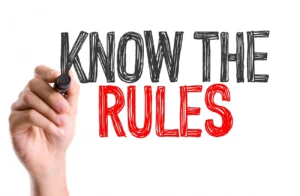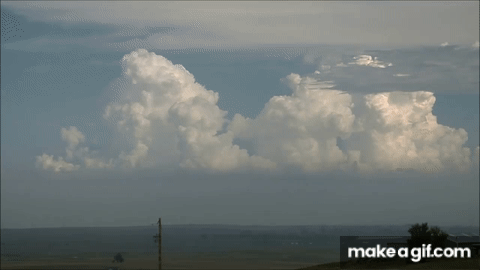 Part of an ongoing series of 5e (2014) Rules notes. See the end of the post for notes on 5.5e (2024) rules.
Part of an ongoing series of 5e (2014) Rules notes. See the end of the post for notes on 5.5e (2024) rules.
I won’t say that Call Lightning is an overrated spell, but it’s a spell that sounds a lot more cool and flexible and awe-inspiring than it actually turns out to be when you try to play with it (properly). It comes across as an alternative to Fireball for Druids, also a 3rd Level Conjuration, but it most certainly is not.
Let’s start with the description.
Range: 120 feet
A storm cloud appears in the shape of a Cylinder that is 10 feet tall with a 60-foot radius, centered on a point you can see within range directly above you. The spell fails if you can’t see a point in the air where the storm cloud could appear (for example, if you are in a room that can’t accommodate the cloud).
When you cast the spell, choose a point you can see under the cloud. A bolt of lightning flashes down from the cloud to that point. Each creature within 5 feet of that point must make a Dexterity saving throw. A creature takes 3d10 lightning damage on a failed save, or half as much damage on a successful one. On each of your turns until the spell ends, you can use your action to call down lightning in this way again, targeting the same point or a different one.
If you are outdoors in stormy conditions when you cast this spell, the spell gives you control over the existing storm instead of creating a new one. Under such Conditions, the spell’s damage increases by 1d10.
This one is a bit more complex than it seems, and it “suffers” by having had its text significantly updated some time into the 5e era; a lot of websites discussing the spell (from when 5e first launched) do not have the spell described correctly . The original text got confusing about the height of the cloud.
So, you need to be in a room or area that has at least ten feet of clearance (to accommodate the height of the cloud). As an example, my kitchen/family room ceiling is only 8 feet high. So this will be most useful out of doors, in tall caverns, or in Intentionally Impressive Rooms (throne rooms, cathedrals, etc.).
(I have seen suggests that if the room is only 10 feet high then the area concerned is all in cloud and thus can’t be seen into. That effect is not explicitly called out, and, frankly, gets into complications I’d rather avoid. If I were to do it, rather than blocking vision I’d make the area into a Dim situation, impacting Perception checks in and out, but not much more).

The rules indicate the room/space must accommodate the cloud. That means an interior room has to be not just tall enough, but wide enough to accommodate a 60-foot radius, i.e., 120 feet wide.
The cloud gets centered on a point no more than 120 feet away (a grid intersection, not a square, if you are playing on a grid), and as noted, has a radius of 60 feet.

On each turn, the caster can choose a point (again, a grid intersection, not a square), and everyone in a 5-foot radius of that point (i.e., the four squares around that intersection) get zorched. The point can be anywhere under that 60-foot radius cloud, and can be moved around (as an Action) each turn. (I would rule that any area to be zorched must be under the cloud.)
It’s a Concentration spell, so you can keep it going for up to 10 minutes, or until someone figures out you’re the one doing it and starts trying to break your concentration.
Call Lightning vs. Fireball
I mean, this doesn’t have to be a competition … but, frankly, the subject is going to come up.
Advantages of Call Lightning
- Lasts for 10 minutes (of Concentration)
- You can hit the same target every. single. round. That’s a lot of 3d10s over 10 minutes.
- Works anywhere under a 60 foot radius
- Range is only 120 feet, but with a 60 foot radius from that point.
- Lightning damage is less resisted than fire.
Advantages of Fireball
- 8d6 beats 3d10 (the first time).
- Can be cast anywhere, not just in a space that will fit a cloud 10 feet high and 120 feet across.
- Hits its entire area upon casting.
- Range is 150 feet (but only a 20 foot radius from that point).
- LoS not necessary for effect; can affect targets around a corner.
- Can set stuff on fire.
Call it anecdata, but during a 2½ year weekly campaign, our Druid had an opportunity to cast Call Lightning maybe … twice? Whereas our Sorcerer let loose with a Fireball at least every second or third session.
That said, if the opportunity does arise, and if it’s thematically proper to the character, Call Lightning can be a ton of fun to cast.
Any changes in 5.5e?
The basic language of the spell is fairly similar in 5.5e (2024):
The storm cloud:
A storm cloud appears at a point within range that you can see above yourself. It takes the shape of a Cylinder that is 10 feet tall with a 60-foot radius.
Here’s the main difference: there’s no longer any language about the spell failing if the room is not large enough to accommodate such a cylinder. Does it? Better ask your DM first to make a ruling before you assume it does (or doesn’t). If the limitation has actually been eliminated, this is a much more useful spell.
The zorching:
When you cast the spell, choose a point you can see under the cloud. A lightning bolt shoots from the cloud to that point. Each creature within 5 feet of that point makes a Dexterity saving throw, taking 3d10 Lightning damage on a failed save or half as much damage on a successful one.
Until the spell ends, you can take a Magic action to call down lightning in that way again, targeting the same point or a different one.
While edited a bit from the 5e text (and calling in the new Magic action), everything else here is the same. The spell also has the added language for using a natural storm out of doors.
So, is there a change? There’s probably someplace in the 5.5e rules I haven’t run across about how AoEs that don’t fit in the space work. Barring that (and not seeing any commentary online), I would, again, discuss it with your DM about whether they want to allow you to blanket any 60-foot radius area with four-squares-at-a-time lightning bolts for ten minutes. As far as I can tell,


One thought on “D&D 5e Rules – Spells: Call Lightning!”